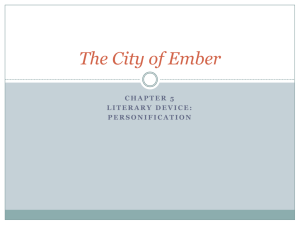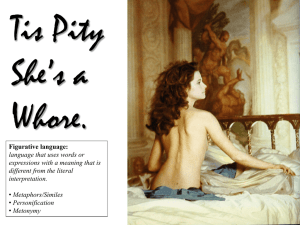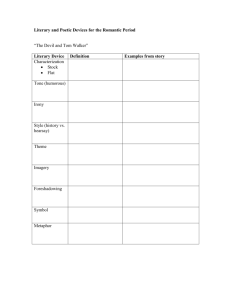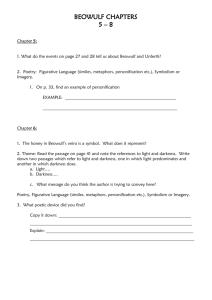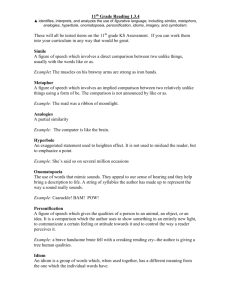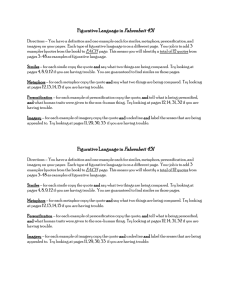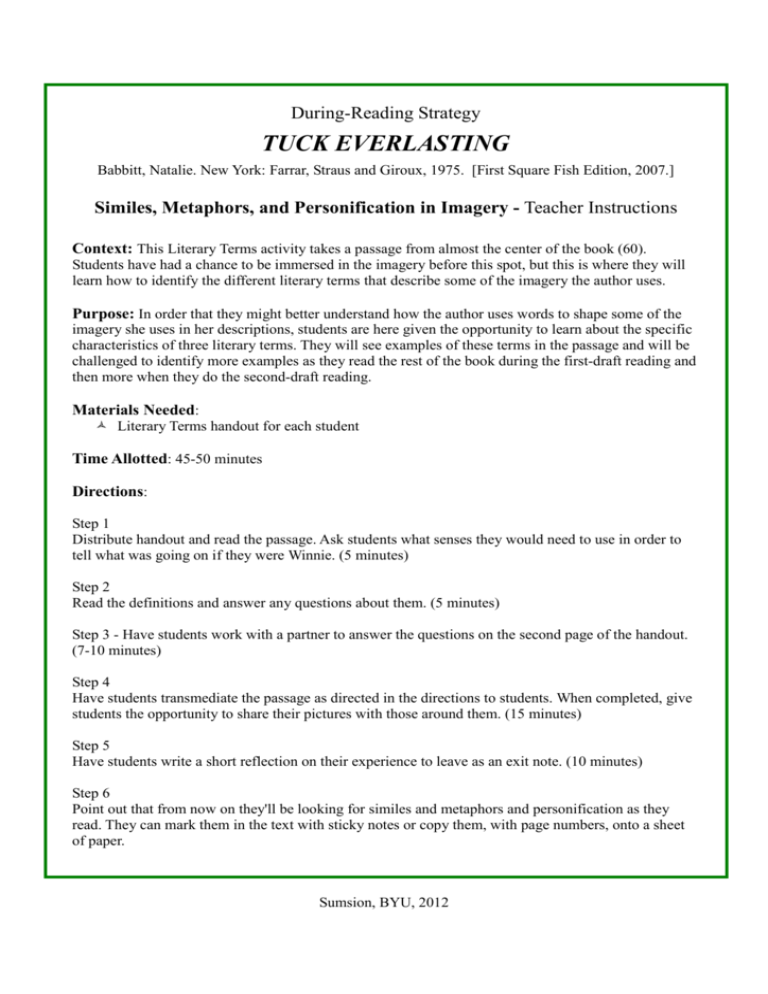
During-Reading Strategy
TUCK EVERLASTING
Babbitt, Natalie. New York: Farrar, Straus and Giroux, 1975. [First Square Fish Edition, 2007.]
Similes, Metaphors, and Personification in Imagery - Teacher Instructions
Context: This Literary Terms activity takes a passage from almost the center of the book (60).
Students have had a chance to be immersed in the imagery before this spot, but this is where they will
learn how to identify the different literary terms that describe some of the imagery the author uses.
Purpose: In order that they might better understand how the author uses words to shape some of the
imagery she uses in her descriptions, students are here given the opportunity to learn about the specific
characteristics of three literary terms. They will see examples of these terms in the passage and will be
challenged to identify more examples as they read the rest of the book during the first-draft reading and
then more when they do the second-draft reading.
Materials Needed:
Literary Terms handout for each student
Time Allotted: 45-50 minutes
Directions:
Step 1
Distribute handout and read the passage. Ask students what senses they would need to use in order to
tell what was going on if they were Winnie. (5 minutes)
Step 2
Read the definitions and answer any questions about them. (5 minutes)
Step 3 - Have students work with a partner to answer the questions on the second page of the handout.
(7-10 minutes)
Step 4
Have students transmediate the passage as directed in the directions to students. When completed, give
students the opportunity to share their pictures with those around them. (15 minutes)
Step 5
Have students write a short reflection on their experience to leave as an exit note. (10 minutes)
Step 6
Point out that from now on they'll be looking for similes and metaphors and personification as they
read. They can mark them in the text with sticky notes or copy them, with page numbers, onto a sheet
of paper.
Sumsion, BYU, 2012
Assessment:
Students will turn in the results of their collections at the end of the second reading of the book. The
student who finds the highest number of examples of any combination of the three figures of speech
will get special recognition.
At least 20 similes, 5 metaphors, and 6 examples of personification will qualify for full points for the
assignment.
TUCK EVERLASTING
Babbitt, Natalie. New York: Farrar, Straus and Giroux, 1975. [First Square Fish Edition, 2007.]
Sumsion, BYU, 2012
Similes, Metaphors, and Personification in Imagery
Passage from page 60:
The sky was a ragged blaze of red and pink and orange, and its double trembled on the
surface of the pond like color spilled from a paintbox. The sun was dropping fast now, a
soft red sliding egg yolk, and already to the east there was a darkening to purple. The
hard heels of her buttoned boots made a hollow banging sound against its wet boards,
loud in the warm and breathless quiet. Across the pond a bullfrog spoke a deep note of
warning. ... Winnie, newly brave with her thoughts of being rescued, climbed boldly into
the rowboat. The rowboat slipped from the bank then, silently, and glided out, tall water
grasses whispering away from its sides, releasing it.
Definitions:
sim·i·le n. A figure of speech in which two essentially unlike things are compared, often in a
phrase introduced by like or as.
Example: The car sped by like a freight train.
met·a·phor n. A figure of speech in which a word or phrase that ordinarily designates one
thing is used to designate another.
Example: "All the world's a stage" (Shakespeare).
per·son·i·fi·ca·tion n. A figure of speech in which inanimate objects or abstractions are
endowed with human qualities or are represented as possessing human form.
Example: The flowers danced about the lawn.
The American Heritage® Dictionary of the English Language, Fourth Edition copyright ©2000 by Houghton Mifflin Company. Updated in 2009. Published by
Houghton Mifflin Company. All rights reserved.
1. Find and underline a simile in the passage.
Copy it here: _______________________________________________________________
Sumsion, BYU, 2012
What makes this a simile? ____________________________________________________
2. Find and circle a metaphor.
Copy it here: _______________________________________________________________
What makes this a metaphor? _________________________________________________
3. Find and box the words that represent the personification of an inanimate object.
Copy it here: _______________________________________________________________
Why do you think this is personification? ________________________________________
4. Draw and color a picture that reminds you of one of the images you've found.
Sumsion, BYU, 2012
Sumsion, BYU, 2012

